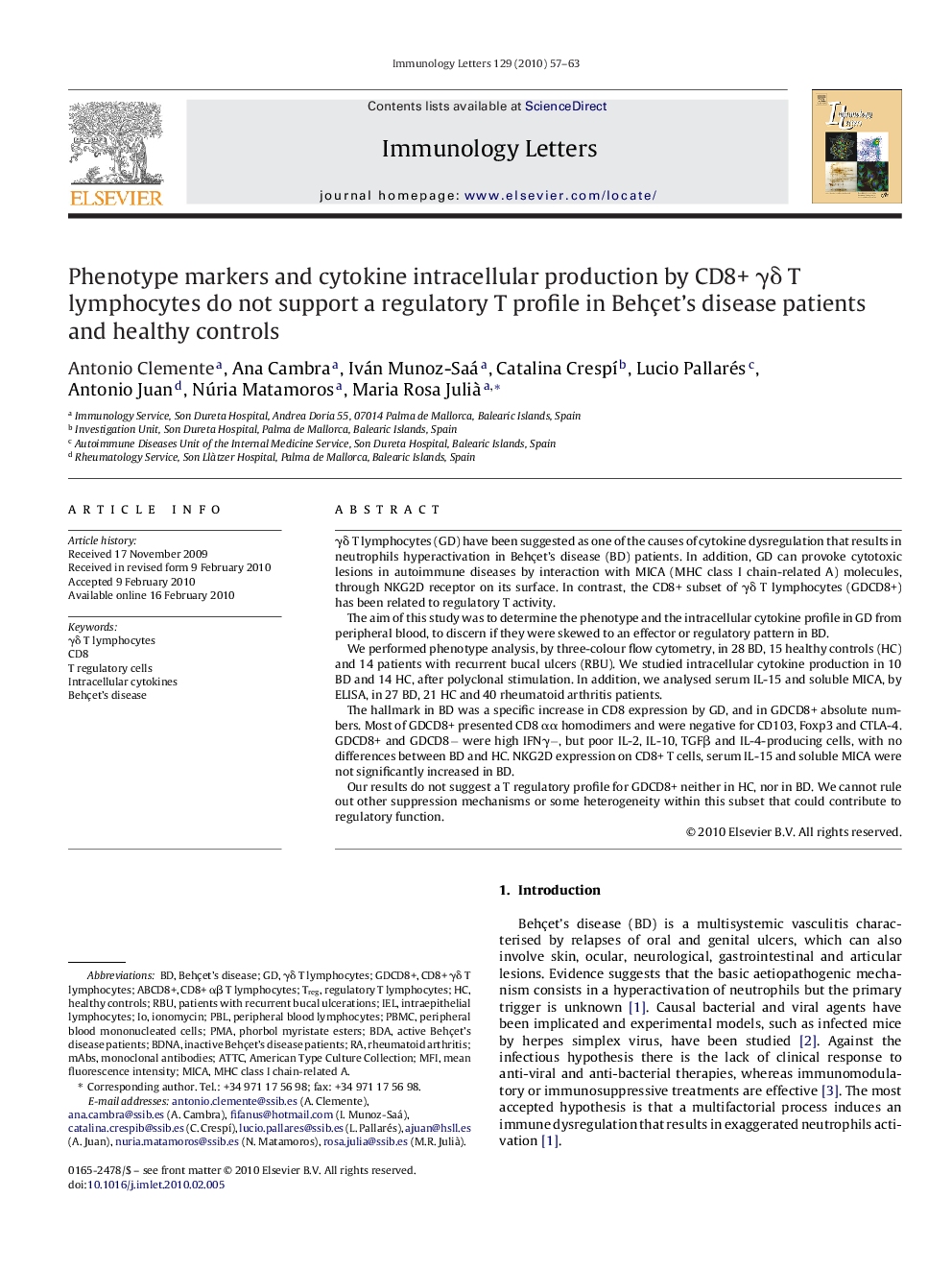| Article ID | Journal | Published Year | Pages | File Type |
|---|---|---|---|---|
| 3355879 | Immunology Letters | 2010 | 7 Pages |
γδ T lymphocytes (GD) have been suggested as one of the causes of cytokine dysregulation that results in neutrophils hyperactivation in Behçet's disease (BD) patients. In addition, GD can provoke cytotoxic lesions in autoimmune diseases by interaction with MICA (MHC class I chain-related A) molecules, through NKG2D receptor on its surface. In contrast, the CD8+ subset of γδ T lymphocytes (GDCD8+) has been related to regulatory T activity.The aim of this study was to determine the phenotype and the intracellular cytokine profile in GD from peripheral blood, to discern if they were skewed to an effector or regulatory pattern in BD.We performed phenotype analysis, by three-colour flow cytometry, in 28 BD, 15 healthy controls (HC) and 14 patients with recurrent bucal ulcers (RBU). We studied intracellular cytokine production in 10 BD and 14 HC, after polyclonal stimulation. In addition, we analysed serum IL-15 and soluble MICA, by ELISA, in 27 BD, 21 HC and 40 rheumatoid arthritis patients.The hallmark in BD was a specific increase in CD8 expression by GD, and in GDCD8+ absolute numbers. Most of GDCD8+ presented CD8 αα homodimers and were negative for CD103, Foxp3 and CTLA-4. GDCD8+ and GDCD8− were high IFNγ−, but poor IL-2, IL-10, TGFβ and IL-4-producing cells, with no differences between BD and HC. NKG2D expression on CD8+ T cells, serum IL-15 and soluble MICA were not significantly increased in BD.Our results do not suggest a T regulatory profile for GDCD8+ neither in HC, nor in BD. We cannot rule out other suppression mechanisms or some heterogeneity within this subset that could contribute to regulatory function.
